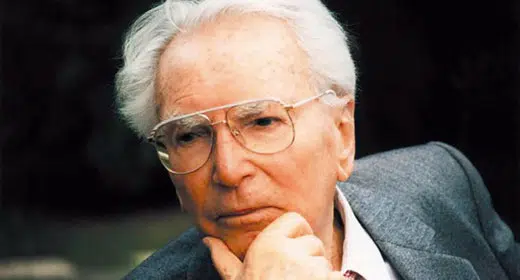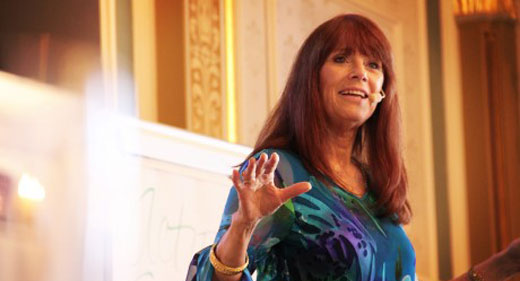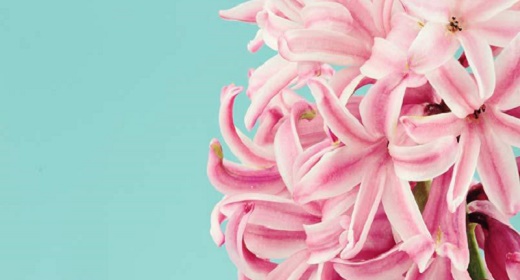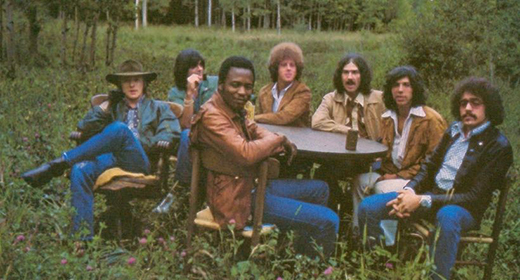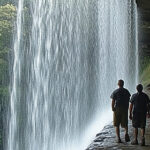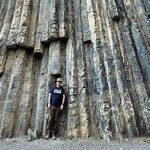by Alan Watts: “Man at his birth is supple and tender, but in death, he is rigid and hard. Thus, suppleness and tenderness accompany life,
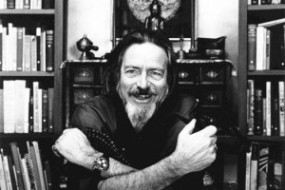 but rigidity and hardness accompany death.” I have just been reading from Lao-tzu on the philosophy of the strength of weakness. It is a strange thing, I think, how it is men in the West do not realize how much softness is strength. One of old Lao-tzu’s favorite analogies was water. He spoke of water as the weakest of all things in the world, and yet there is nothing to be compared with it in overcoming what is hard and strong. You can cut water with a knife. It lets the knife go right through, but when the knife is withdrawn there’s not even the trace of a wound.
but rigidity and hardness accompany death.” I have just been reading from Lao-tzu on the philosophy of the strength of weakness. It is a strange thing, I think, how it is men in the West do not realize how much softness is strength. One of old Lao-tzu’s favorite analogies was water. He spoke of water as the weakest of all things in the world, and yet there is nothing to be compared with it in overcoming what is hard and strong. You can cut water with a knife. It lets the knife go right through, but when the knife is withdrawn there’s not even the trace of a wound.
Lao-tzu also said that while being a man, one should retain a certain essential feminine element, and he who does this will become a channel for the whole world. The ideal of the hundred percent tough guy, the rigid, rugged fellow with muscles like rocks, is really a weakness. Probably we assume this sort of tough exterior as a hard shell to protect ourselves so much from the outside as from fear of weakness on the inside. What happens if an engineer builds a completely rigid bridge? If, for example, the Golden Gate Bridge or George Washington Bridge didn’t sway in the wind, if they had no give, no yielding, they would come crashing down. And so you can always be sure that when a man pretends to be one hundred percent man, he’s in doubt of his manhood. If he can allow himself to be weak, he can allow himself what is really the greatest strength, not only of human beings, but of all living things. It is upon the philosophy of the strength of weakness that came from China to Japan through the migration of Zen Buddhism that there has largely been inspired one of the most astonishing forms of self defense known as Judo, or perhaps more popularly, Ju-jitsu.
The word Judo is fascinating because it means Ju- the gentle, do- way. Do is the Japanese way of pronouncing the Chinese Tao, and so it is the gentle Tao, the philosophy of the Tao as applied to self defense. Now this philosophy has various components, and one of the most basic things to the whole practice of Judo is an understanding of balance. Balance, indeed, is a fundamental idea in Taoist philosophy. The philosophy of the Tao has a basic respect for the balance of nature. You don’t upset that balance. You try to find out what it is and go along with it. In other words you avoid such mistakes as the wholesale slaughter of an insect pest, of the introduction of rabbits into a country like Australia without thought as to whether the rabbit has a natural enemy, because through such interference with the balance of nature you find yourself in trouble. So the philosophy of balance is the number one thing that all students of Judo have to learn.
You may illustrate this principle using a ball. Wherever one pushes the ball it yields, but it never loses its balance. It is the safest form in the world; completely contained, and never off center. And thus to be completely contained, and never put off center by anything, this is what is aimed at in Zen.
This is also symbolized sometimes in the figure of the legendary founder of Zen, Bodhidharma. Japanese toy makers represent him as a little dumpy toy figure weighted in such a way that however you hit it, it always comes upright again. And so in the same way the expert in Zen, as well as in Judo, must be a man who is never fazed. He is never brought to a point of doubt where he hesitates, where there’s an interval between the action of life and his response to it. Now if we look at these principles of Judo the problem of balance is easily demonstrated with a question of lifting a heavy roll of material. We would be foolish to try and just pick it up from the top because that shows no understanding of the laws of balance. If you want to lift something, go below its center of gravity. Put your shoulder to it, undermine it, and lift it so. And that principle goes throughout Judo. Part of the understanding of balance in Judo is to learn to walk in such a way that you are never off center. That is to say your legs form a triangle, and your body is on the apex of it, and when you turn you always try to keep your feet approximately under you shoulders, and in this way you are never of balance.
The second principle, beyond keeping balance, and understanding balance, is not to oppose strength to strength. When one is attacked by the enemy you do not oppose him. Instead you yield to him, just like the matador yields to the bull, and you use his strength and the principle of balance to bring about his downfall. Supposing, for example, there is a blow coming at me from a certain direction. Instead of defending myself, and pushing the blow off, the idea in judo is to carry the blow away. The knee goes out, catching the adversary below his point of balance, and he drops with a ‘bang’ brought about on his own initiative, and your cunning. The same attitude of relaxed gentleness is most beautifully seen, for instance, in watching cats. When a cat falls of a tree, it lets go of itself. The cat becomes completely relaxed, and lands on the ground with a heavy thud. And if, for example, a cat were about to fall off a tree and suddenly made up its mind that it didn’t want to fall at all and became tense, it would be just a bag of broken bones upon landing.
So, in the same way, it is the philosophy of Zen that we are all falling off a tree. As a matter of fact, the moment we were born we were kicked off a precipice and we are falling, and there is nothing that can stop it. So instead of living in a state of chronic tension, and clinging to all sorts of things which are actually falling with us because the whole world is impermanent, be like a cat.


